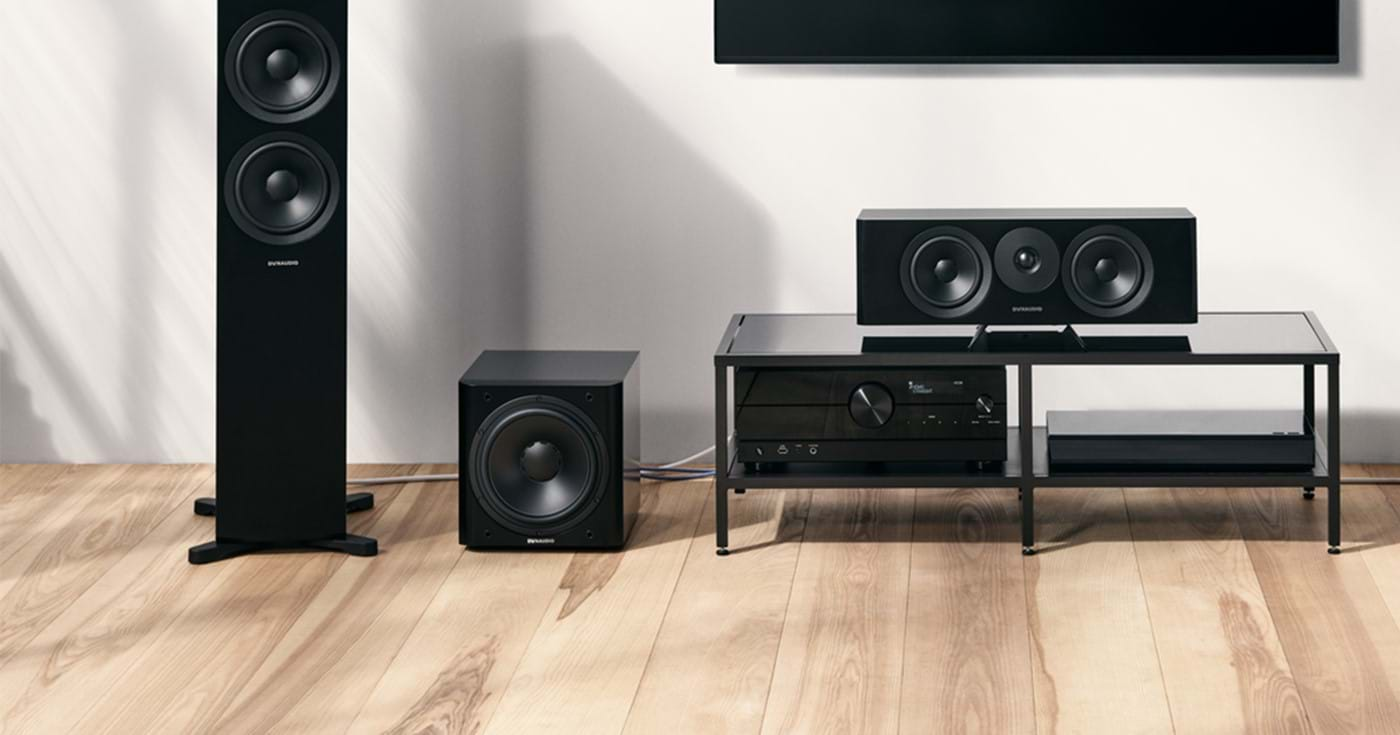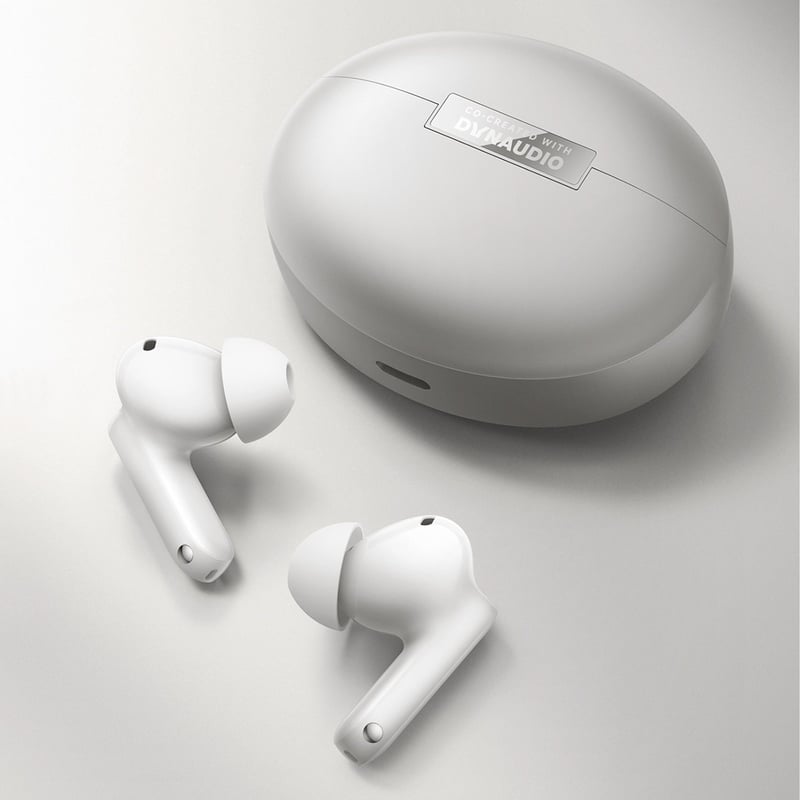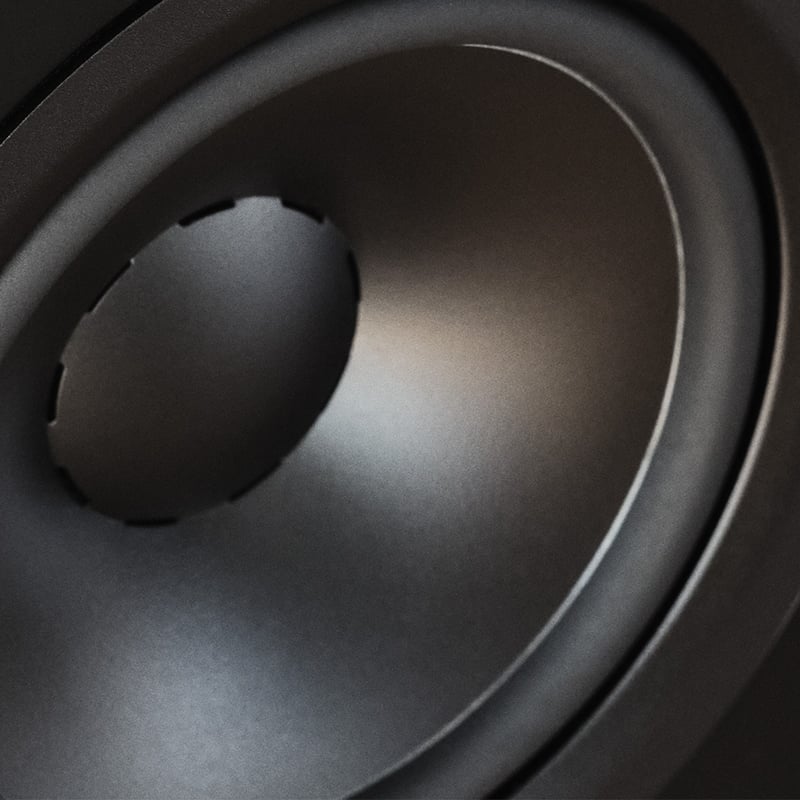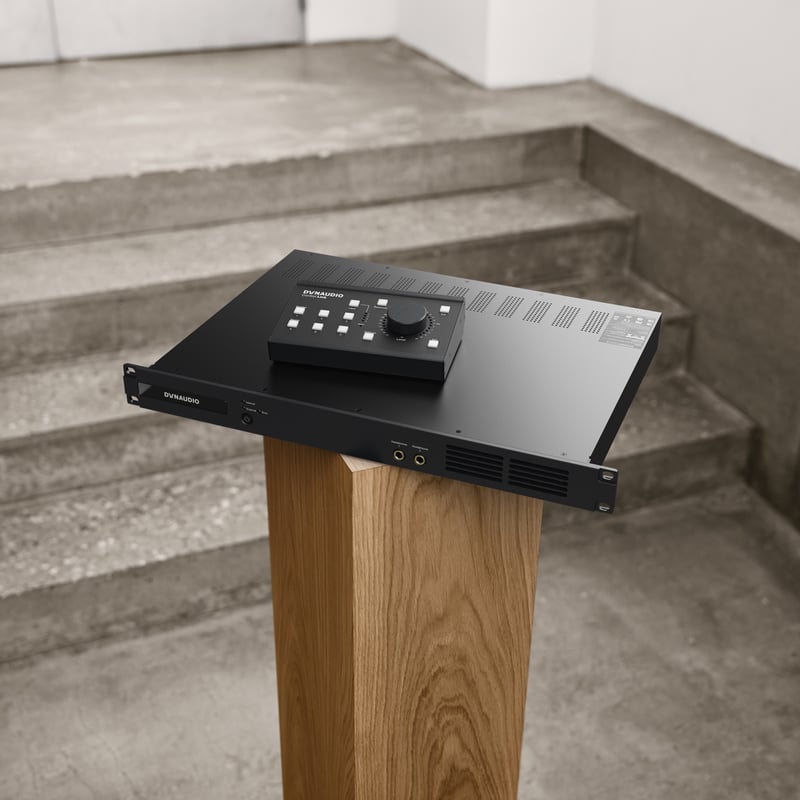You’ve seen them, you’ve heard people talking about them, and you’ve (possibly without even knowing it) heard them at countless music venues, cinemas and sports arenas. But you’ve always wondered if a subwoofer might be overkill in your home hi-fi system. In reality, this is very rarely the case.
Almost any stereo setup can benefit from added bass-bolstering provided by a good subwoofer. Despite this, the sub’s role in a well-balanced and – dare we say – complete speaker setup, is often still overlooked by hi-fi newcomers and experienced audiophiles.
We often refer to the whole setup (in English, at least) as a stereo system, or even just ‘the stereo’. This term very much suggests that a hi-fi configuration consists of just a pair of speakers and doesn’t give much credence to the notion of a supplementary box of noise covering the low frequencies. But that’s linguistics. We’re here to talk about acoustics…
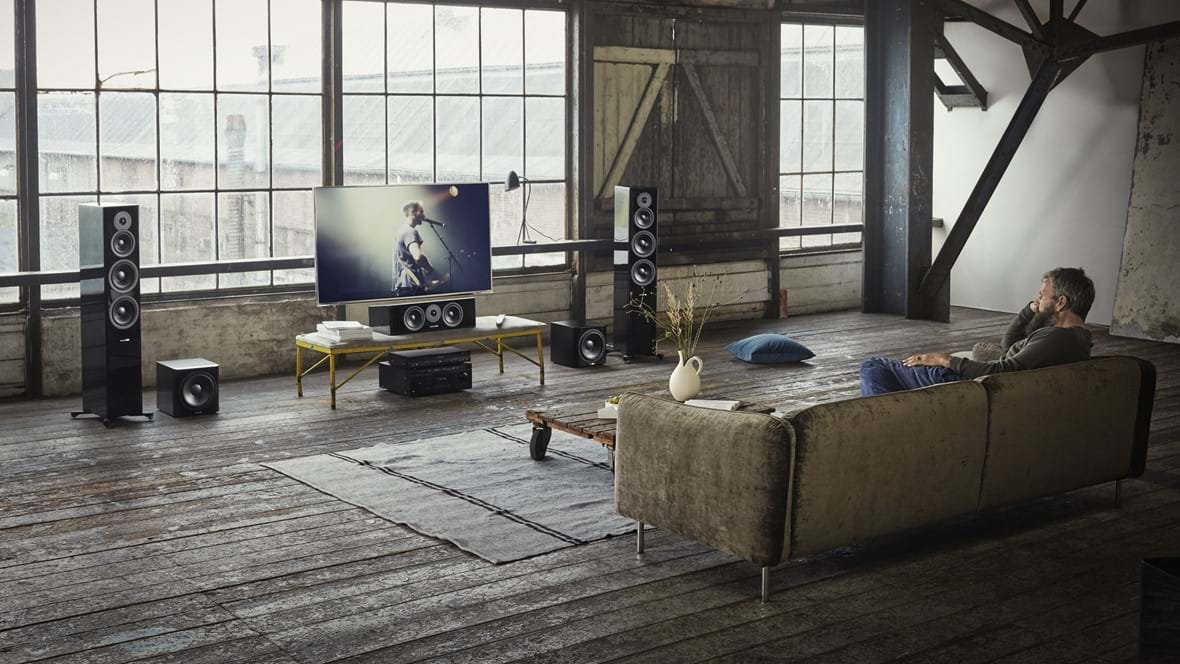
When to use a subwoofer
In a stereo setup
Due to the trend of increasingly beefy bass in modern popular music, very few speaker pairs are able reproduce these frequencies to a perceivable level on their own. Even larger floor-standers will often struggle to reproduce the pulsating undercurrents of your typical Billie Eilish, Ariana Grande or (going back a few years) Dr Dre tunes. Many tracks from these artists rely heavily on the musical movements going on in the low registers, and bass is a key component to their style and feel. To be unable to reproduce these elements would be doing the music a disservice, as they’re quite clearly designed to be heard and felt by the listener.
That’s where a subwoofer steps in to do the heavy lifting – emanating those lows below 80Hz, that you as the listener wouldn’t be able to perceive otherwise. To fully enjoy tracks from a multitude of genres, such as pop, hip-hop, R’n’B, EDM, trance, techno, house – you name it – a subwoofer is simply a must.
But it’s not all about pumping bass in modern music. A sub will also affect the entire image. With classical music, for example, the subwoofer effectively increases the size of the soundstage – giving a more accurate and defined picture of the size of the instruments that were used during the recording, as well as giving the overall performance more weight and warmth. You’ll even notice the difference when listening to a solo violin. Really.
A subwoofer will also help your existing stereo speakers to perform better by picking up the low-end burden. A subwoofer, in conjunction with a high-pass filter on your existing floor-standing or bookshelf speakers (especially on two-way speakers), will let you shift the low frequencies away from these speakers, giving them the freedom to concentrate on the job they were built for: producing full mids and crisp highs. Relieving your speaker’s mid/bass driver of its truly low low-frequency duties means that it doesn’t need to move as much air. That means less unwanted distortion, and a cleaner and more defined sound.
In surround
Now let’s take a look at how you can incorporate a subwoofer into a surround-sound setup. George Lucas once famously said: “Sound is half the experience is seeing a film.” As a man who took sound so seriously that he developed the industry-defining THX audio-reproduction standard in 1983 to ensure that the soundtrack for Return of the Jedi would be faithfully reproduced in cinemas, we reckon Mr Lucas might have been on to something.
Now we’re not presuming that you’re only rocking a 5.1 surround-sound system for TV and film, but if you’ve gone to the trouble of surrounding your sofa and TV with multiple totems of aural goodness then chances are that you value the cinematic arts just as much as you do music. If not more.
And, no self-respecting surround-sound system is complete without the ‘.1’ – the subwoofer. This becomes even more important with TV and film due to the simple fact that most modern surround recordings have a dedicated LFE (low-frequency effects) channel.
If you’re not getting these low-frequency effects, then you're missing a fair chunk of the action – and, indeed, the director’s intended artistic vision. The subwoofer is crucial in presenting the full cinematic experience. In fact, subwoofers are mandatory in the THX standard for movies (again, thank you, George), which although originally conceived primarily for use in cinemas is fully enjoyable in your living room through the simple use of a subwoofer, making it an absolute no-brainer for movie buffs.
Why use more than one
Yes, you read that right. Multiple subwoofers. Is that a thing? It is and it’s glorious. For starters, it can help you get a more even bass-response in the room, with less distortion and more dynamic headroom, making for more precision. In principle, using multiple subwoofers has the same positive effect of using one subwoofer. It’s just even more of the good stuff. Sometimes more is just… more.
Where should I put it?
While this can be room-dependent, a good starting point is to put your subwoofer near to one of the two stereo speakers to the left or right. Yup, that’s right, believe it or not, the corner, not the middle, often yields best results. This is due to the subwoofer getting the best coupling to the room and therefore often results in the highest possible output from the sub.
If you are rocking more than one sub, then (apart for having them set to a mono configuration) you’ll likely want to place them at the front of the room. One option is to place them between your centre channel and stereo loud speakers, possibly even under your TV, depending on its width.
Another popular method is to place the two subs so that they flank the entire setup. By this we mean that the subs are placed on the outer edges of the configuration or even – if the room allows for it – in the corners of the room.
Both of these placement methods provide a clean, symmetrical appearance while also reducing your ears’ ability to localise the source of the low frequencies, which is the desired effect.
If aesthetics are less important to you, and you’re prioritising sound-performance, then you may like to try the subs placed in two corners, facing each other diagonally across the room, leaving you with one in front of the sofa and one behind. Alternatively – and especially if foot-traffic is not an issue – you may like to try a subwoofer on each side of the room, roughly about halfway between the stereo speakers and the sofa, pointing directly in towards the middle of the room.
This gives the feeling of an all-enveloping bass in the room and a faux omni-directionality for a truly compelling surround-sound experience that has to be heard to be believed.
It’s worth noting that in almost all cases, using multiple subwoofers won’t add numbers on to that ‘.1’ suffix. Even if you were using five of them in addition to your five surround speakers, it would still be a 5.1-channel system – not 5.5 – because all the subs are playing exactly the same thing in a mono configuration.
How loud should it be?
When pondering the question “how high do I set it?”, a great rule of thumb to get you started is to set your subwoofer to match the output at which you usually use your existing stereo speakers.
It is said that, on average, humans can detect sounds in a frequency range from 20Hz up to 20kHz (20,000Hz). With that in mind, it follows that 25Hz is rather low (for humans at least) and yet it is at this point and below where a decent sub should excel. However, frequencies as low as 25Hz aren’t always necessarily perceived as actual sound by the human ear, but rather as something that is ‘felt’ in the room.
This often makes it tricky to know if you’ve turned your subwoofer up ‘loud’ enough and you may find yourself needing to do some tests and calibrations – just as you would with any other type of loudspeaker – in order to find the sub’s sweet spot output-wise. Here’s a couple of methods.
A simple yet effective way of tackling this task is to put on one of your favourite films that has a lot of dynamics in the soundtrack – loud action sequences, explosions and that sort of thing. Find yourself a scene where the explosions are sudden and the impact is obvious. When you’ve done this, pause the scene and try turning your subwoofer or subwoofer up to a point which you’re pretty certain is just a little too loud.
If the action sequence elicits a constant perceivable reaction from the subwoofer then you’ve probably gone too far (which, to be fair, we did just tell you to do). The idea is to back off on the sub’s volume until those low rumbles are only really popping out at the exact time of impact from that grenade, bus crash or spaceship collision. Still too loud? Keep fine-tuning until you get it spot-on.
A more methodical and arguably more accurate approach would be to use an SPL (Sound Pressure Level) meter. These are readily available as smartphone apps these days.
We’d recommend aiming for around 90dB from your subwoofer when sat a 1m away from it. We’re not going to get into speaker calibration in this article, but you can get a full and informative look at the process by following the link below.
Hopefully you’re well on your way to understanding why a subwoofer can significantly improve your existing setup. While it isn’t absolutely essential, we urge you to at least try out a sub and experience the enhancements first-hand. Taking that deep dive may seem daunting at first, but once you’ve heard how deep the rabbit hole goes, you’ll never look back.

Sign up to get more great articles
Nothing compares to the satisfaction of knowing – for a fact – that something is as good as it gets


